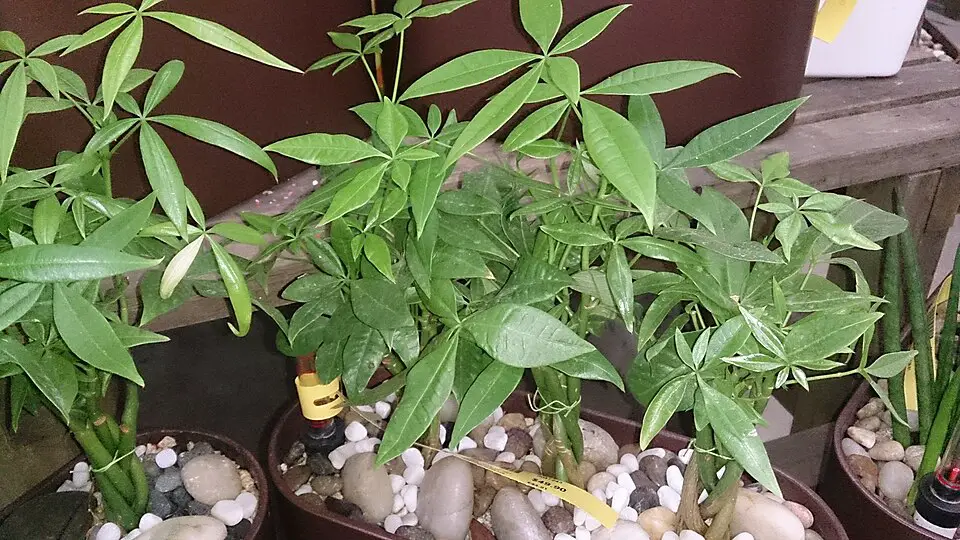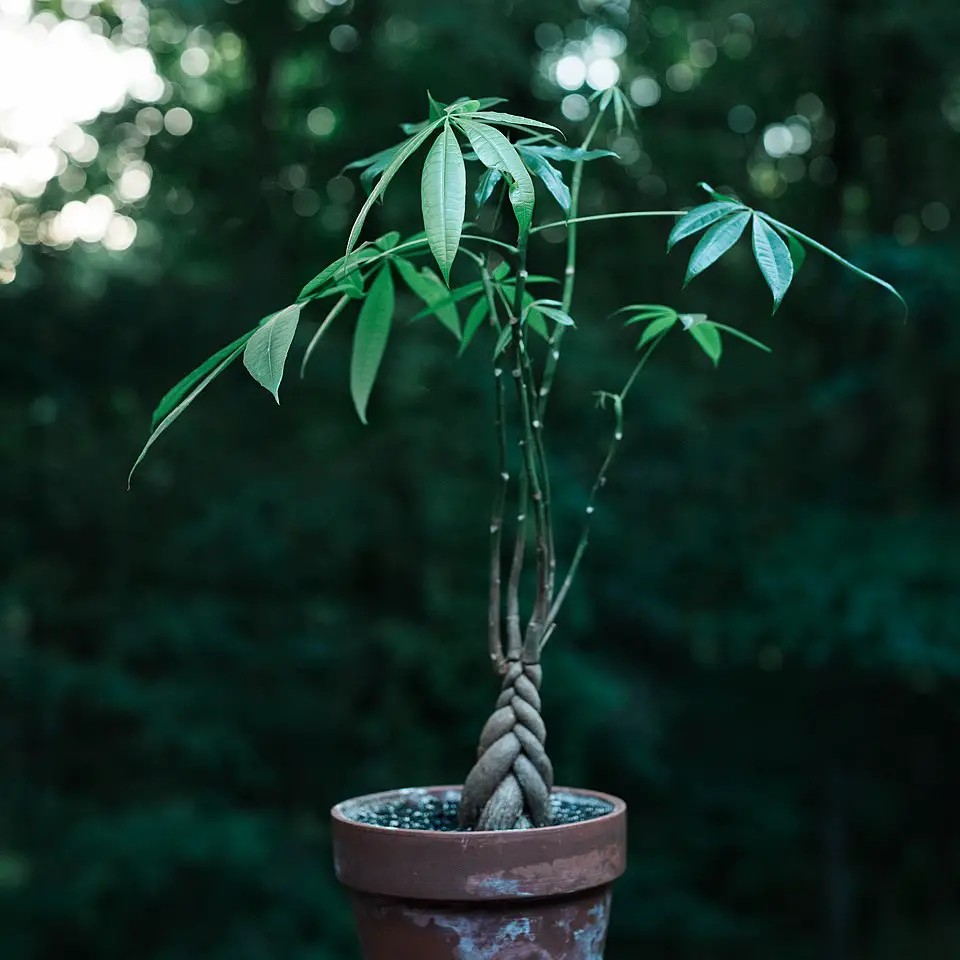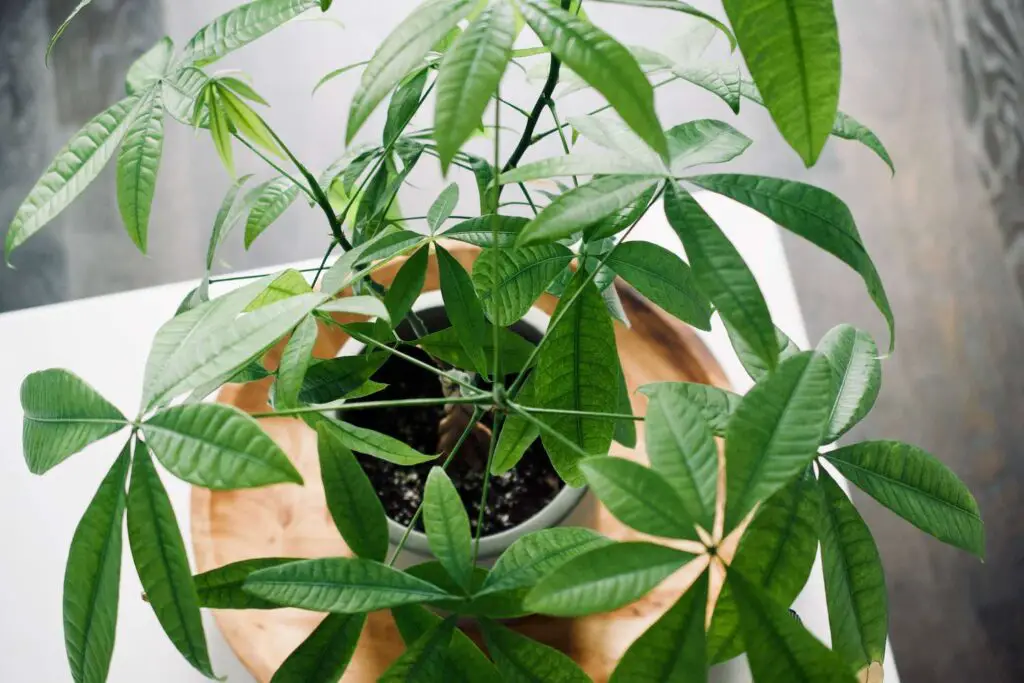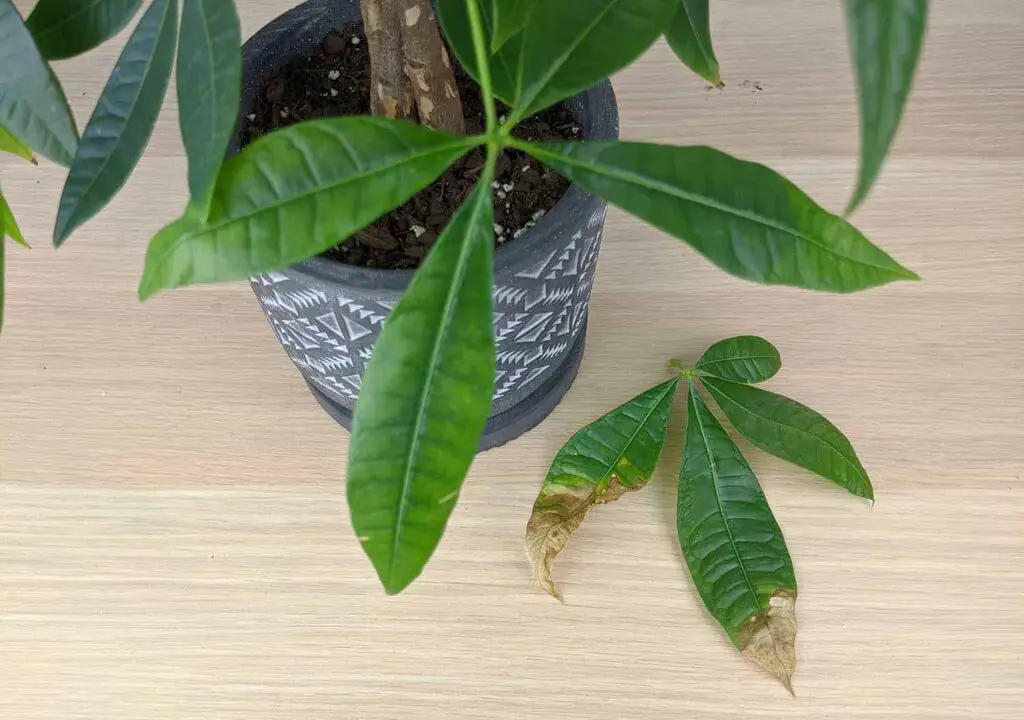Caring for a Money Tree outdoors involves providing the right amount of sunlight, water, and protection from extreme weather conditions. This plant thrives in bright, indirect sunlight and needs well-draining soil. Regular pruning helps maintain its shape and encourages healthy growth.
The Money Tree, scientifically known as Pachira aquatica, has become a popular choice for both indoor and outdoor gardening. Originally from Central and South America, this plant is not only admired for its attractive braided trunk and lush green leaves but is also believed to bring good luck and prosperity. When grown outdoors, it can reach impressive heights and create a stunning focal point in any garden.

To successfully care for a Money Tree outdoors, it’s essential to understand its environmental needs. Proper placement, watering techniques, and seasonal care will significantly affect the plant’s health and growth. Below are the key factors to consider when growing a Money Tree outside.
Light Requirements
The Money Tree requires plenty of light but is sensitive to direct sunlight. Here are some guidelines to follow:
- Place your Money Tree in a location that receives bright, indirect sunlight.
- Avoid areas with harsh afternoon sun, as this can scorch the leaves.
- If you notice the leaves turning yellow or dropping, it may be an indication of too much direct sunlight.
- In shaded areas, the plant may grow slower and become leggy.
Watering Practices
Watering is crucial for maintaining a healthy Money Tree. It is important to strike a balance, as overwatering can lead to root rot while underwatering can cause wilting. Follow these watering tips:

- Water your Money Tree when the top inch of soil feels dry to the touch.
- Ensure proper drainage by using pots with drainage holes or planting in well-draining soil.
- During hot weather, the tree may require more frequent watering; conversely, reduce watering during cooler months.
- Always check the moisture level before watering again.
Soil Requirements
The type of soil used can greatly influence the growth of your Money Tree. It thrives in well-draining soil that retains some moisture but does not become waterlogged. The following soil characteristics are ideal:
- A mix of potting soil and sand or perlite enhances drainage.
- Aphids and other pests may thrive in poorly draining soil, so choose wisely.
- Consider using a commercial cactus or succulent mix if you prefer pre-mixed options.
Temperature and Humidity
Money Trees prefer humid environments and do best in temperatures between 60°F to 75°F (15°C to 24°C). Here are some considerations:
- Avoid exposing the tree to temperatures below 50°F (10°C).
- If living in dry climates, consider misting the leaves regularly or using a humidity tray.
- During hot summer days, provide some shade to prevent leaf burn.
Pest and Disease Management
Like many plants, Money Trees can be susceptible to pests such as spider mites and aphids. Monitoring for signs of infestation is essential. Here are some management strategies:

- Regularly inspect the leaves for any signs of pests.
- If pests are detected, use insecticidal soap or neem oil as a natural remedy.
- Avoid over-fertilizing, as this can lead to increased susceptibility to pests and diseases.
By following these care guidelines, your Money Tree can thrive outdoors, bringing beauty and potential fortune to your garden space. As you provide the right conditions, you will enjoy watching it grow into a magnificent specimen.
Fertilizing Your Money Tree
Fertilizing is an important aspect of caring for a Money Tree outdoors. Proper nutrition helps the plant grow strong and healthy. Here are some guidelines to follow for effective fertilization:
- Use a balanced, water-soluble fertilizer with equal parts nitrogen, phosphorus, and potassium (e.g., 20-20-20).
- During the growing season (spring and summer), fertilize every four to six weeks.
- Reduce or stop fertilization in the fall and winter when the plant’s growth slows down.
- Follow the manufacturer’s instructions for dilution and application to avoid over-fertilizing.
Pruning and Shaping
Pruning your Money Tree is essential to maintain its shape and encourage bushier growth. This practice also helps prevent overcrowding and allows for better air circulation. Here’s how to effectively prune your Money Tree:
- Use clean, sharp pruning shears to avoid damaging the plant.
- Remove any dead or yellowing leaves to improve overall health.
- Trim back overly long branches to promote denser foliage.
- Aim for a balanced shape by cutting back branches evenly on all sides.
- Consider pruning in spring, just before the growing season begins, for optimal results.
Repotting Your Money Tree
As your Money Tree grows, it may outgrow its pot. Repotting allows for continued growth and provides fresh soil nutrients. Here are steps to successfully repot your Money Tree:
- Choose a pot that is one size larger than the current one and has drainage holes.
- Gently remove the plant from its existing pot, taking care not to damage the roots.
- Inspect the roots; trim any that appear black or mushy due to rot.
- Add fresh potting soil mixed with perlite or sand for improved drainage to the new pot.
- Place the Money Tree in the new pot and fill in with soil, making sure to leave about an inch of space at the top.
- Water thoroughly after repotting to help settle the soil around the roots.
Seasonal Care Considerations
Caring for your Money Tree involves adapting your care routine based on seasonal changes. Each season presents unique challenges and opportunities for growth:

Spring
This is the ideal time for new growth. Follow these tips:
- Begin fertilization as the plant wakes up from dormancy.
- Check for pests that may have survived the winter.
- Consider repotting if the tree has outgrown its container.
Summer
The growing season requires consistent care:
- Water more frequently as temperatures rise, ensuring the soil remains moist but not soggy.
- Monitor for signs of sunburn on leaves; provide shade during extreme heat.
- Mist leaves regularly to maintain humidity levels.
Fall
Prepare your Money Tree for cooler temperatures:
- Gradually reduce watering as growth slows down.
- Resume regular checks for pests, as they may be more visible now.
- Avoid fertilizing as the plant enters dormancy.
Winter
This season requires careful monitoring:
- Keep the plant indoors if temperatures drop significantly, protecting it from frost.
- Avoid placing it near heating vents, which can dry out the air.
- Mist leaves occasionally to combat dry indoor air conditions.
Common Issues and Troubleshooting
If your Money Tree is not thriving, it’s essential to identify potential problems quickly. Here are some common issues and their solutions:
Yellow Leaves
Yellowing leaves can indicate several issues:
- Overwatering: Ensure proper drainage and allow the soil to dry out between waterings.
- Lack of nutrients: Consider fertilizing if it has been a while since the last feeding.
Browning Leaf Tips
This often signals underwatering or low humidity:
- Check moisture levels in the soil; adjust your watering schedule accordingly.
- Mist leaves more frequently or use a pebble tray filled with water to increase humidity.
Pest Infestations
If you notice pests, act quickly:
Bank Notes, Dollar, Us Dollars, Usd, Money, Funds, Bills, Paper Money, Finance, Currency, Money, Money, Money, Money, Money Isolate affected plants to prevent spreading.
- Treat with insecticidal soap or neem oil as previously mentioned.
By recognizing these common issues early on, you can take appropriate action and ensure your Money Tree remains healthy and vibrant. Proper care will lead to a flourishing outdoor plant that enhances your garden’s beauty.
Creating the Ideal Outdoor Environment
To successfully grow a Money Tree outdoors, it is essential to create an environment that mimics its natural habitat. This involves considering factors such as location, soil composition, and companion planting. Here are some tips to ensure your Money Tree thrives.
Choosing the Right Location
The placement of your Money Tree is crucial for its health. Here are some factors to consider when selecting a location:
- Choose a spot that receives bright, indirect sunlight for most of the day.
- Avoid low-lying areas where water may pool after heavy rainfall, as this can lead to root rot.
- Ensure the location is sheltered from strong winds that could damage the branches and leaves.
- If planting in a container, consider moving it to a more suitable location based on seasonal changes.
Soil Composition
The right soil mix plays a significant role in the overall health of your Money Tree. A well-draining soil mix helps prevent waterlogged conditions. Consider the following:
- Use a mix of potting soil, sand, and perlite to achieve the ideal drainage.
- A pH level between 6.0 and 7.0 is optimal for Money Trees. Testing kits are available at garden centers.
- Avoid heavy clay soils that retain excess moisture, as this can harm the roots.
Companion Planting with Money Trees
Companion planting can enhance the growth and health of your Money Tree. Pairing it with compatible plants can provide benefits such as pest control and improved soil health. Here are some suitable companions:
Good Companion Plants
Consider planting these alongside your Money Tree:
- Basil: This herb helps repel pests while promoting a healthy environment.
- Marigolds: Known for their pest-repelling properties, they can deter harmful insects.
- Spider Plant: This plant helps improve air quality and can thrive in similar conditions.
Poor Companion Plants
Avoid planting certain species near your Money Tree, as they may compete for nutrients or attract pests:
- Cacti: They require different watering needs and can stress your Money Tree.
- Herbs like Dill and Fennel: These can attract pests that may harm your Money Tree.
Watering Techniques for Outdoor Money Trees
Wateri
ng techniques can vary significantly based on weather conditions and the specific needs of your Money Tree. Effective watering ensures that your plant remains healthy without risking over or under-watering.
Methods of Watering
Here are some effective watering methods to consider:
- Drip Irrigation: This method delivers water directly to the soil, reducing water wastage and ensuring deep root hydration.
- Soaking Method: Water thoroughly until it drains from the bottom of the pot or ground, then allow the top inch of soil to dry before watering again.
- Misting: In addition to regular watering, misting the leaves can help maintain humidity and prevent pests.
Signs of Moisture Needs
Understanding the signs that indicate whether your Money Tree needs water is crucial for its care:
- If the leaves begin to droop or curl, it may be a sign of underwatering.
- Yellow leaves can indicate overwatering; check soil moisture levels immediately.
- A dry top layer of soil (1-2 inches) is typically a good indicator that it’s time to water.
Seasonal Adjustments for Outdoor Care
The changing seasons affect how you care for your Money Tree outdoors. Adjusting your care routine based on the season will help ensure its health and vitality throughout the year.
Spring Care Tips
As temperatures rise, focus on promoting growth:
- Increase watering frequency as new growth appears and temperatures warm up.
- Begin fertilizing every four to six weeks to support active growth.
- Check for pests that may come out with warmer weather.
Summer Care Tips
Hot temperatures require special attention:
- Monitor soil moisture levels closely; hot days may necessitate daily watering.
- Provide afternoon shade if temperatures exceed 90°F (32°C) to prevent leaf burn.
- Mist the plant regularly during particularly dry spells to maintain humidity.
Fall Care Tips
As the weather cools down, you should prepare your tree for dormancy:
- Taper off fertilization as growth slows down in preparation for winter.
- Reduce watering frequency as temperatures drop and days become shorter.
- Inspect for any lingering pests and treat immediately if necessary.
winter Care Tips
Caring for your Money Tree during winter requires vigilance:
- If you live in colder climates, bring potted trees indoors to protect them from frost.
- Limit watering; only water when the top inch of soil is dry.
- Avoid placing the tree near heating vents that can dry out the air excessively.
This comprehensive care approach will help you maintain a healthy outdoor Money Tree capable of flourishing in various conditions. By understanding its needs and adjusting your care accordingly, you will enjoy a vibrant addition to your garden.
Additional Tips for Success
In addit
ion to the care guidelines already discussed, there are several other factors to consider that can enhance your experience growing a Money Tree outdoors. These tips will help ensure your plant remains vibrant and healthy throughout its life.
Monitoring Growth
It is important to regularly monitor the growth and health of your Money Tree. Observing changes can help you catch any potential issues before they become serious:
- Keep a journal or log to track growth patterns, watering schedules, and any changes in appearance.
- Take note of any new growth or flowering; this is a good indicator of your tree’s health.
- Watch for changes in leaf color or texture, as these can signal underlying problems.
Creating a Care Routine
Establishing a consistent care routine can help ensure that your Money Tree receives the attention it needs. Consider the following:
- Set reminders for watering and fertilizing to maintain a regular schedule.
- Inspect the plant at least once a week for signs of pests or other issues.
- Evaluate environmental conditions regularly, especially during seasonal changes.
Sharing Your Plant
If you find yourself with extra cuttings or seedlings, consider sharing them with friends or family. Sharing plants can enhance relationships and spread the joy of gardening:
- Offer cuttings to loved ones who may appreciate a Money Tree in their home.
- Participate in local plant swaps or gardening clubs to exchange plants and tips.
- Sharing your gardening experiences can inspire others to start caring for their own plants.
Final Thoughts
Caring for a Money Tree outdoors can be a rewarding endeavor. These plants are not only beautiful but also symbolize prosperity and good fortune. By understanding their specific needs concerning light, water, humidity, and soil, you can create an environment where they thrive.
Always remember that regular monitoring and adjustments based on seasonal changes are key to the success of your Money Tree. Whether you’re a beginner gardener or an experienced green thumb, this plant offers an opportunity for growth and learning in your gardening journey.
With the right care and attention, your Money Tree can flourish outdoors, becoming a beautiful focal point in your garden while bringing positive energy into your space. Embrace the process and enjoy the satisfaction that comes with nurturing such a unique and delightful plant.
